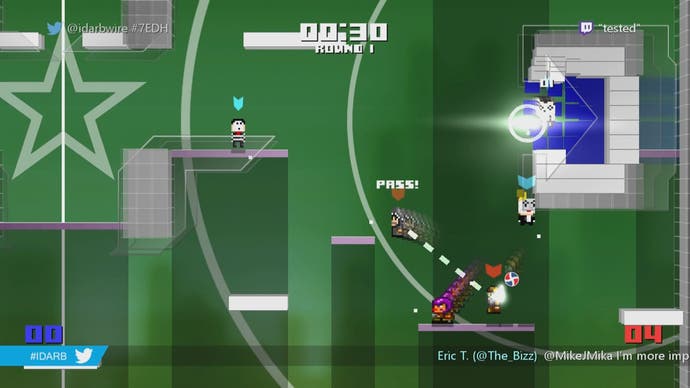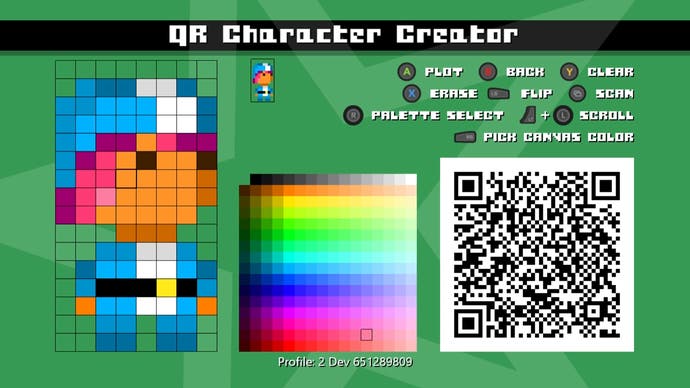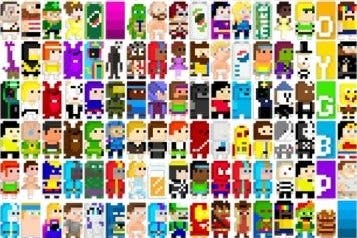#IDARB review
#prettyalright.
The fundamentals of #IDARB are immediately recognisable to anyone with even a passing familiarity with most sports - two teams vie for control of a ball, which they must move to the opposite team's goal to score points. The reality of playing it is far, far different. Welding the anarchy of Smash Bros., NES-era platforming, and Twitter hashtags into a curious pastiche, #IDARB is an absolute farce. At times it can be too much, but more often than not it's a vehicle for chaotic fun that rewards those that can manage its many nuances.
First, a confession: I'm rubbish at #IDARB. I breezed through the single player modes, introducing myself to some of the ideas driving the game. I learned about its Smash Bros and football references, and thought I had a decent handle on how to play well enough. But those trial runs gave me an inflated sense of confidence.
I invited a few friends over to help me test out multiplayer options and I was crushed. My first match? I lost 44 to 3. The next wasn't much better. 41-7. Then 35-15. After eight more games, I never managed to rack a win. In spite of that, I found myself having a great time. With each failure, I came back looking to try a bit harder. That was enough to tell me I was playing a special game.
#IDARB is bizarre, and that's due in no small part to its origins. Last January, a few of the developers started a conversation on Twitter, specifically to pull in the concepts of fans. Everything from Twitch plays Pokemon-style audience interaction, to weird half-time shows come from that, and it explains why actual food recipes are unlockables in a game ostensibly focused on eSports. The name itself is meant to help pull in additional feedback from users, ensuring that most of the people who talk about it will make their conversations easy to search for and pick apart. The name itself is a reference to one of the first images shown of the game, which was just a red box on a screen. That simple beginning has blossomed out to encompass Portal-esque credits sequences, buddy cop movie references, and a snarky announcer that channels Randy Moller.

Beneath the ludicrous façade, there is a decent skill-based foundation. #IDARB is built from the ground up to support strong team cooperation and precarious plays. Hogging the ball might reduce the chance of an opponent stealing it, but it also puts an upper limit on how well you can score. Passing the ball between players tallies up a "bounce multiplier" which can take a 2-point shot and make it worth 12. If you're ready to take some large risks, it's not unheard of to score 30 points or more in one go. Preparing these grandiose goals takes tactical manoeuvring and skill, but the pay-offs are often well worth the effort.
There is a finesse to it as well, especially when "hashbombs" hit. These are odd field-wide effects that are triggered by people tweeting #idarb in combination with any number of other codes. Some cause a pixelated Rick Astley to dance across your screen, backed by a muddled karaoke version of his now infamous song, others can cause jump scares, or turn all the players into circus clowns. The effects are as varied as you might imagine from a game that, quite literally, was designed in part by Twitter.
Hashbombs add to the game in the sense that I found it more enjoyable to play with them than without, but they're also something of an obstacle. They aren't necessary, and they can sometimes frustrate more than they amuse. Often they reminded me of some of last year's insane games like Goat Simulator or I Am Bread in that they're built with a streaming/YouTube audience in mind. Their lunacy veils a general lack of depth, instead bolstering an already hefty emphasis on spectacle. Players can create their own teams and characters - much as in any sports simulator - but in place of people they can have bacon or coffee. In place of a traditional logo, they can (and I'm sure many will) have a literal anus. You can even compose your own theme song, leading me to believe that "Never Gonna Give You Up" will be among the first of such submissions. If you don't want to take the time and energy to design your own team, you can quickly and easily import everything with QR codes that #IDARB's editor spits out with each creation.

More than perhaps any other game I've yet played, #IDARB has hitched itself to the whims of internet culture - for better or for worse. The utter lack of some features that would be a given for most, belies the notion that #IDARB is built with traditional audiences in mind. Online play, from what little I could nab, was wonderful, but you have to jump through some hoops to get anything decent out of it. You cannot, for example, search for anything but 1v1 matches if you're playing alone. You can have up to four players per team, but if you've only got three people, you can't toss an AI onto one team to balance things out. Despite the dearth of people with four Xbox One controllers, much less eight, having eight friends is a foregone conclusion.
#IDARB is the product of a streaming culture. The frenzied hashbomb gags, QR code back customisers, and even the fast-paced nature of it all screams exhibitionism. That's not bad by any stretch. I had a splendid time playing what I did, but I also felt that it could have been more. The only other game that I can recall that lets eight people cram onto a single television screen is Smash Bros. 4, and that succeeded, at least in part because of how much it trusted its players to find their own fun. With countless options, AI opponents to toss in wherever, levels editors, and modes it was perfectly fine letting its audience decide what they wanted to toy with.
When I play #IDARB, I don't feel like I'm trusted. Hashbombs are a neat idea, but they come when someone else wants them to. Playing with others is amazing, but #IDARB doesn't help me out if I don't have quite that many friends available. Instead, it's watchable. It can be hard for the untrained eye to grasp everything that's going on in Smash, but #IDARB is easy, it's digestible. Unfortunately, that means that for all it gets right, #IDARB can be a lot more fun to watch than it is to play.









